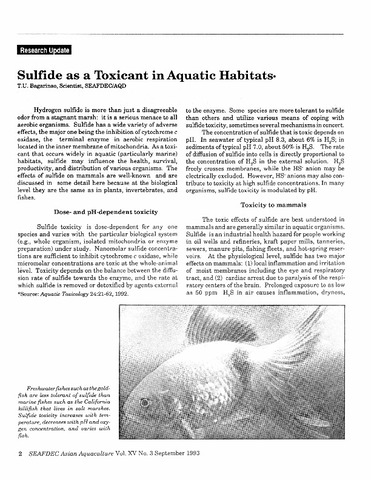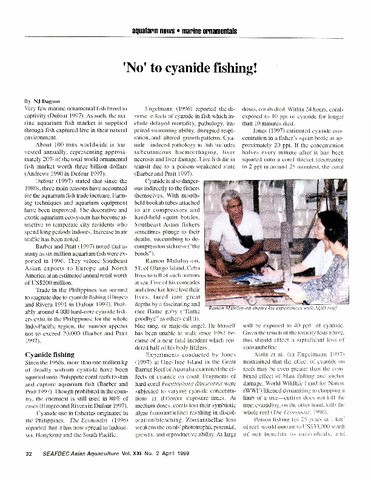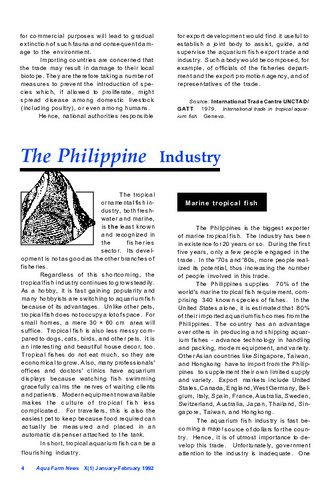Sulfide as a toxicant in aquatic habitats
| dc.contributor.author | Bagarinao, Teodora | |
| dc.date.accessioned | 2013-11-29T08:43:33Z | |
| dc.date.available | 2013-11-29T08:43:33Z | |
| dc.date.issued | 1993 | |
| dc.identifier.citation | Bagarinao, T. U. (1993). Sulfide as a toxicant in aquatic habitats. SEAFDEC Asian Aquaculture, 15(3), 2-4. | en |
| dc.identifier.issn | 0115-4974 | |
| dc.identifier.uri | http://hdl.handle.net/10862/1791 | |
| dc.description | Source: Bagarinao, T. (1992). Sulfide as an environmental factor and toxicant: tolerance and adaptations in aquatic organisms. Aquatic Toxicology, 24(1-2), 21–62. | en |
| dc.description.abstract | The toxic effects of sulphide are best understood in mammals and are generally similar in aquatic organisms. At the physiological level sulphide has 2 major effects on mammals: 1) local inflammation and irritation of moist membranes including the eye and respiratory tract; and, 2) cardiac arrest due to paralysis of the respiratory centres of the brain. The toxicity of sulphide to plants, macroinvertebrates, freshwater fish and marine fish is discussed in detail. It is concluded that the role of sulphide in mass kills of fish, shrimp and other animals in brackishwater earthen ponds, lakes and sea cages should be determined. | en |
| dc.language.iso | en | en |
| dc.publisher | Aquaculture Department, Southeast Asian Fisheries Development Center | en |
| dc.title | Sulfide as a toxicant in aquatic habitats | en |
| dc.type | magazineArticle | en |
| dc.citation.volume | 15 | |
| dc.citation.issue | 3 | |
| dc.citation.spage | 2 | |
| dc.citation.epage | 4 | |
| dc.citation.journalTitle | SEAFDEC Asian Aquaculture | en |
| dc.subject.asfa | toxicity | en |
| dc.subject.asfa | aquatic organisms | en |
| dc.subject.asfa | marine fish | en |
| dc.subject.asfa | aquaculture | en |
| dc.subject.asfa | fish kill | en |
| dc.subject.asfa | freshwater fishes | en |
| dc.subject.asfa | sulphides | en |






